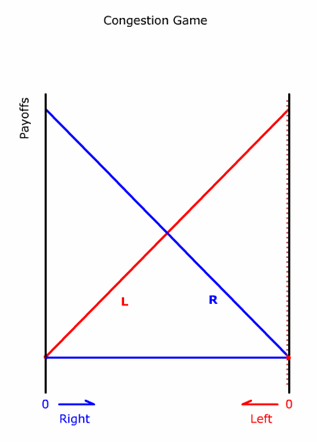One Road's Congestion Is Another Road's Revenue
Charging motorists for contributing to rush-hour congestion may be economists' dream of internalizing negative externality on toll roads but politicians' nightmare when competing highways are free.
In the Orange County of California, a privately owned 10-mile long toll road (91 Express Lanes) that runs from northern Anaheim to the Riverside County line has offered paying motorists relief from the crowded Riverside Freeway. Every day, 270,000 trips are made through this stretch of the 91, turning the freeway into a virtual parking lot during the morning and evening rush hours. The crush has been a bonanza for California Private Transportation Co., which operates the private lanes. Tolls have been hiked seven times in five years, and still two of the four private lanes are reaching capacity in the evening. Express Lanes commuters now pay more than $8 a day for a round trip at crunch time and log about 33,000 daily vehicle trips (Weikel 11/25/01).
Since the whole point of paying toll is to get relief from the heavily congested Riverside Freeway, rates on the toll road must be high enough to ensure free-flowing traffic by discouraging non-critical use at rush hours. Indeed, the 10-tier tolls fluctuate during the day, rising as rush hour approaches (Weikel 10/20/02). Such flexible tolls are made possible by an electronic payment system whereby the ID of the vehicles is automatically detected (Morin).
Congestion pricing or value pricing has been economists' dream of making motorists pay for the external cost of highway traffic. When motorists must pay for the congestion generated to other users, they are more likely to adjust their use patterns to the road capacity.
Unfortunately, since freeways are still free, such mixed-use patterns have generated unanticipated problems. With increasing population in the area, the number of vehicles from Riverside and San Bernardino counties is expected to double during the morning and evening rush hours by 2015 (Weikel 9/11/01). Unless the traffic capacity of surrounding freeways that feed into the 91 Express Lanes increases, the competing toll road is going to be overwhelmed no matter how high the tolls are.
But to entice private investment in the late 80s and early 90s when funds for public projects were scarce, Caltrans (California Department of Transportation) signed a non-compete contract with the California Private Transportation Co. that prevents the Orange County from improving the traffic capacity of the Riverside Freeway. Since the toll road is located at the median of Riverside Expressway, revenue diversion is a genuine concern. And unless the California Private Transportation Co. can earn enough to pay off its $130 million debt before 2030 when the toll road will revert to the public sector, the private venture would have been for nought
References:
- Morin, M. "91 Express Lanes Pricing Some Drivers out; Per Mile, the Tollway Is One of the Costliest in the Nation. Crush-Hour Commuters May Pay an Extra $3.65 Per Week." Los Angeles Times 1/16/2001.
- Weikel, D. "Tollway Owners in Driver's Seat; Orange County: Caltrans Is Virtually Powerless to Ease Congestion on Adjoining Freeways Because of Agreements That Promote Gridlock." Los Angeles Times 11/25/01.
- Weikel, D. Toll Road Raising Rates Again to Cut Use; Commuting: It's the Seventh Hike in Five Years for the 91 Express Lanes in Orange County. Their Popularity Is Slowing Traffic." Los Angeles Times 10/20/01
Glossary:
- externalityFree benefits conferred or uncompensated cost imposed on innocent third parties due to unassigned or poorly assigned property rights or when the cost exceeds the benefit of exercising properly assigned rights.
- congestion gameA strategic game situation where the average payoff decreases as more people choose a given option.

Topics:
Keywords
91 Express Lanes, California Private Transportation, Caltrans, congestion pricing, external cost, negative externality, non-compete clause, Orange County, revenue, Riverside Expressway, toll road, traffic, value pricing
